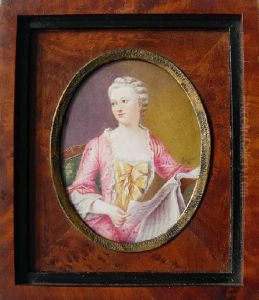Francois Bouchera Paintings
François Boucher was a French painter, draughtsman, and etcher, whose work epitomizes the Rococo style of art prevalent in France during the early to mid-18th century. Born on September 29, 1703, in Paris, France, Boucher was the son of a lesser known painter Nicolas Boucher, who provided his first artistic training. His remarkable talent was evident from an early age, and he quickly advanced in the art world, winning the prestigious Prix de Rome in 1723, which allowed him to study in Italy from 1727 to 1731. The influence of the Italian masters, combined with his innate skill and the flourishing Rococo movement back in France, shaped Boucher's early career.
Upon his return to France, Boucher found patronage under Madame de Pompadour, the mistress of King Louis XV, and became the court painter in 1765. His works for the court and other aristocratic patrons are characterized by their light-hearted and often frivolous themes, including pastoral scenes, mythological subjects, and landscapes, all imbued with a sense of eroticism and decorated with exquisite details. Boucher's art is renowned for its vivid colors, sensuous brushwork, and curvilinear forms, which captured the frivolity and decadence of the French elite before the Revolution.
Boucher's influence extended beyond painting; he was also a significant force in tapestry design, book illustration, and the decorative arts. He was instrumental in the development of the French Rococo style in these areas, contributing designs to the Manufacture des Gobelins (the royal tapestry factory) and influencing the decorative schemes of the period's interiors. Despite the criticism later directed at his work for its perceived superficiality and overindulgence in sensuality, Boucher's contribution to French art history and the Rococo movement is undeniable. He was a prolific artist, producing over 10,000 works during his lifetime, including paintings, drawings, and engravings.
François Boucher died on May 30, 1770, in Paris. His legacy lived on through his students and followers, most notably Jean-Honoré Fragonard, who continued to propagate the Rococo style with a similar sense of playfulness and eroticism. Today, Boucher's works are held in high esteem and can be found in major museums around the world, celebrated for their beauty, craftsmanship, and historical value.
